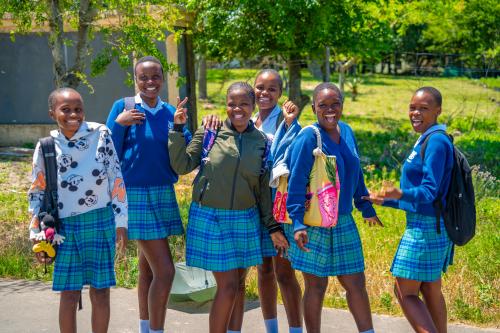Many have been shocked by the World Bank’s estimate that it would take Brazil more than 260 years to reach the OECD average proficiency in reading and 75 years in mathematics. But as demonstrated by the discussion last week following the presentation of the World Development Report on Learning in São Paulo, Brazil’s education community is aware that the country lags far behind. It knows that it needs to do a lot, and soon.
Brazil is not alone. According to the report, 40 percent of kids in Latin America and the Caribbean do not acquire basic skills in numeracy and literacy during primary school (in Africa this number is 80 percent). The report concludes that the world is facing a “learning crisis”—even though more kids go to school, they are not learning nearly as much as they should.
But is this really a learning crisis? In commenting on the report, Ricardo Paes de Barros, chief economist of the Ayrton Senna Institute and a specialist in education policies in Brazil, challenged this conclusion. He argued instead that Brazil is facing a “copying crisis”: There is plenty of data about the performance of schools across municipalities in Brazil, with huge variations, but it’s clear that the poor performers don’t improve. Transferring experiences from one country to another can be difficult, but learning from the successes of your peers within the same country should be a lot easier. In Brazil, this is not happening.
Perhaps this is because the successes aren’t documented well and hence poorly understood, or because the necessary changes face political resistance and hence require leadership that is in rare supply. Overcoming political resistance is never easy but documenting successes, in Brazil’s case at least, should be. A recent World Bank report on the efficiency of public spending provides a useful entry point and perspective. The report compares the educational outcomes attained by 4,648 municipalities in Brazil in 2013 with the cumulative spending per student over between 2009 and 2013 (Figure 1). This comparison leads to an obvious conclusion: Good educational outcomes in Brazil have little to do with how much a municipality spends and a lot with how the resources are utilized. This is good news for those who wish to copy successful experiences.
Big differences within Brazil
A closer inspection of Figure 1 reveals a second striking fact: a regional pattern in the efficiency of education spending. The poorest parts of the North and Northeast are still missing basic infrastructure, so additional investment could boost outcomes. In the richer South and Southeast, by contrast, inefficiencies are glaring and resources could be saved without jeopardizing—possibly even improving—education outcomes.
Figure 1: Spending and outcomes in education in Brazil—not a close correlation
Source: World Bank estimates based on SIOPE and Prova Brasil. IDEB is a summary index of the state of compulsory education.
What accounts for this variation? What has helped some municipalities succeed where others are failing?
The answer to the first question is demographics. Costs in the South and Southeast are high because the population is aging. Student numbers are declining while teacher numbers have remained constant. This together with substantial wage increases has meant that education spending per student in primary and lower secondary school has increased over 10 percent in real terms every year for the past decade. Teacher-student ratios in some aging municipalities are now above the OECD average, explaining around 40 percent of the inefficiency in education spending across municipalities.
For an answer to the second question, let’s take a look at the municipality of Sobral in the interior of the state of Ceara in Brazil’s Northeast. Brazil may take a long time to catch up with the OECD, but Sobral has already done so (Figure 2). The municipality has benefited from the introduction of strong performance incentives in the way the state of Ceara distributes resources to municipalities for education. Good outcomes lead to more resources and allow teachers to be better supported. Sobral has also benefited from the greater autonomy that Ceara has granted to education administrators and school principals at the municipal level. And Ceara has collected data on teacher performance in the classroom, provided feedback, and access to specialized coaching to improve the relevance of in-service teacher training.
Figure 2: Learning from the best—Sobral has education outcomes better than the OECD average even with modest spending
Source: World Bank estimates based on SIOPE and Prova Brasil.
What works well
Sobral’s experience exemplifies broader lessons from a growing number of evaluations on what works in education (see World Development Report lead author David Evans’ blog for a good discussion).
First, teachers are key. Their careers need to be structured to attract talent, to incentivize good practices, and to punish poor performance. In Brazil, too many teachers (35 percent!) are preoccupied with non-teaching tasks at school, or don’t even show up for work.
Second, school administrators have to make sure that teachers get the support and are held accountable for classroom results. Brazilian schools can be tough places, and some students require special attention. If Brazil wants to scale up successes like Sobral’s, teachers cannot be left alone to deal with these problems. Sadly, many school principals are political appointees rather education experts. Sobral’s mayor notes: “One key recipe for success is to keep politicians out of schools.”
Third, teachers and administrators need to be supported with an adequate curriculum. In this respect, Brazil has taken a big step forward. The reform of the Ensino Medio offers students in upper secondary school a greater choice and reduces the number of mandatory subjects. It also introduces full-day school to provide more teaching hours. These steps follow international success stories, such as Poland’s reform of upper secondary education in the late 1990s.
Fourth, while politicians should not be educators, to sustain improvements and overcome the potential resistance to a more performance oriented approach to school management, a broad political coalition around the goal of learning is necessary. Sobral has experienced the emergence of education tourism—as experts from Brazil and abroad come to study their success. Sobral’s residents, its teachers and its politicians are proud of what they have achieved and this helps sustain results.
Finally, the World Development Report emphasizes ensuring that data are collected and experiences are documented. This lesson Brazil has already taken to heart; what it now needs is to distill its own experiences, copy and adapt what works, and stop what doesn’t. Large regional variations within Brazil make this tough: Schooling in a small town like Sobral is not quite the same enterprise as it is in a sprawling metropolis like Rio de Janeiro. But, in the face of obvious evidence, it is no excuse for inaction.
Paes de Barros is right. At least in education, Brazil could start catching up if it learned to copy its own successes.
The Brookings Institution is committed to quality, independence, and impact.
We are supported by a diverse array of funders. In line with our values and policies, each Brookings publication represents the sole views of its author(s).








Commentary
Brazil can improve education by copying its own successes
March 6, 2018